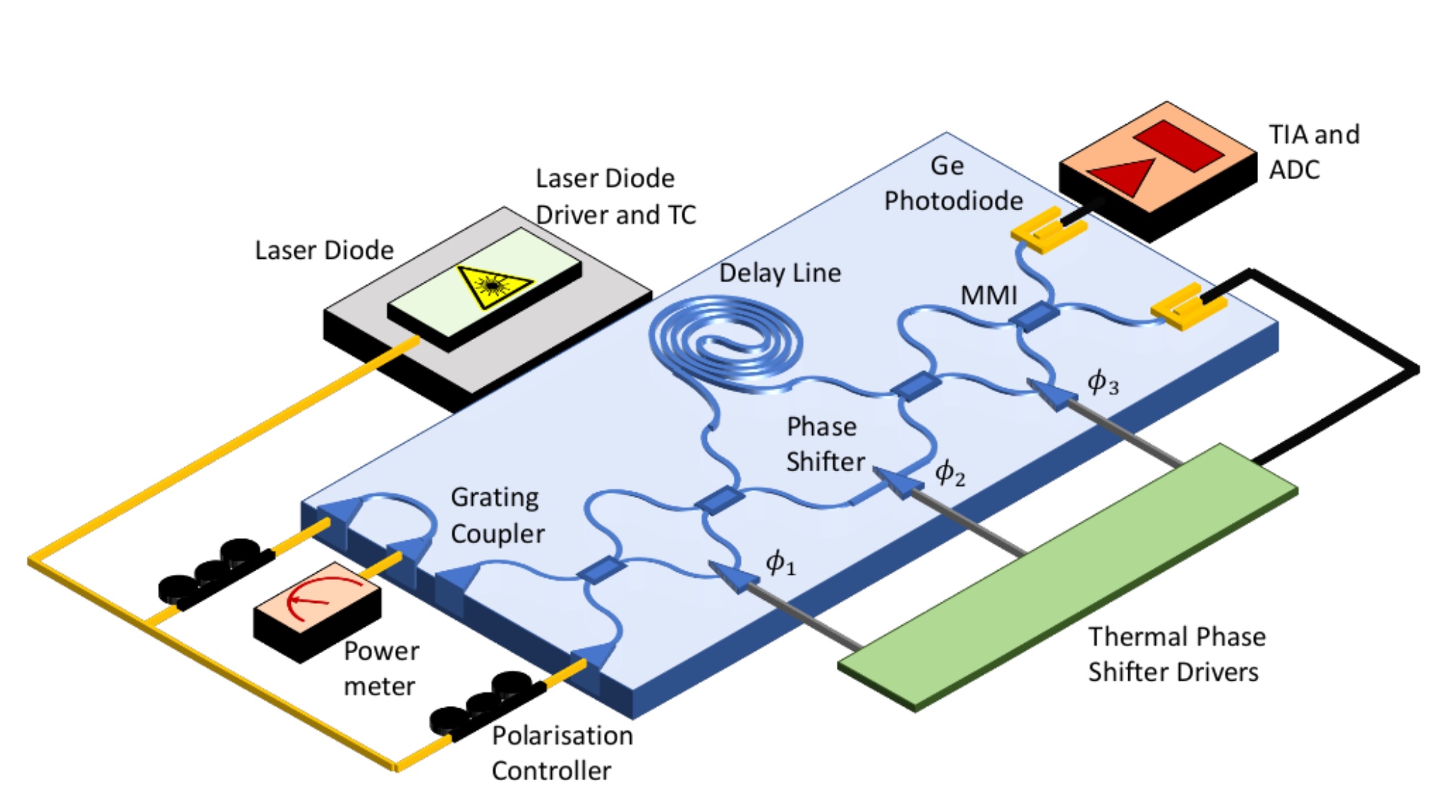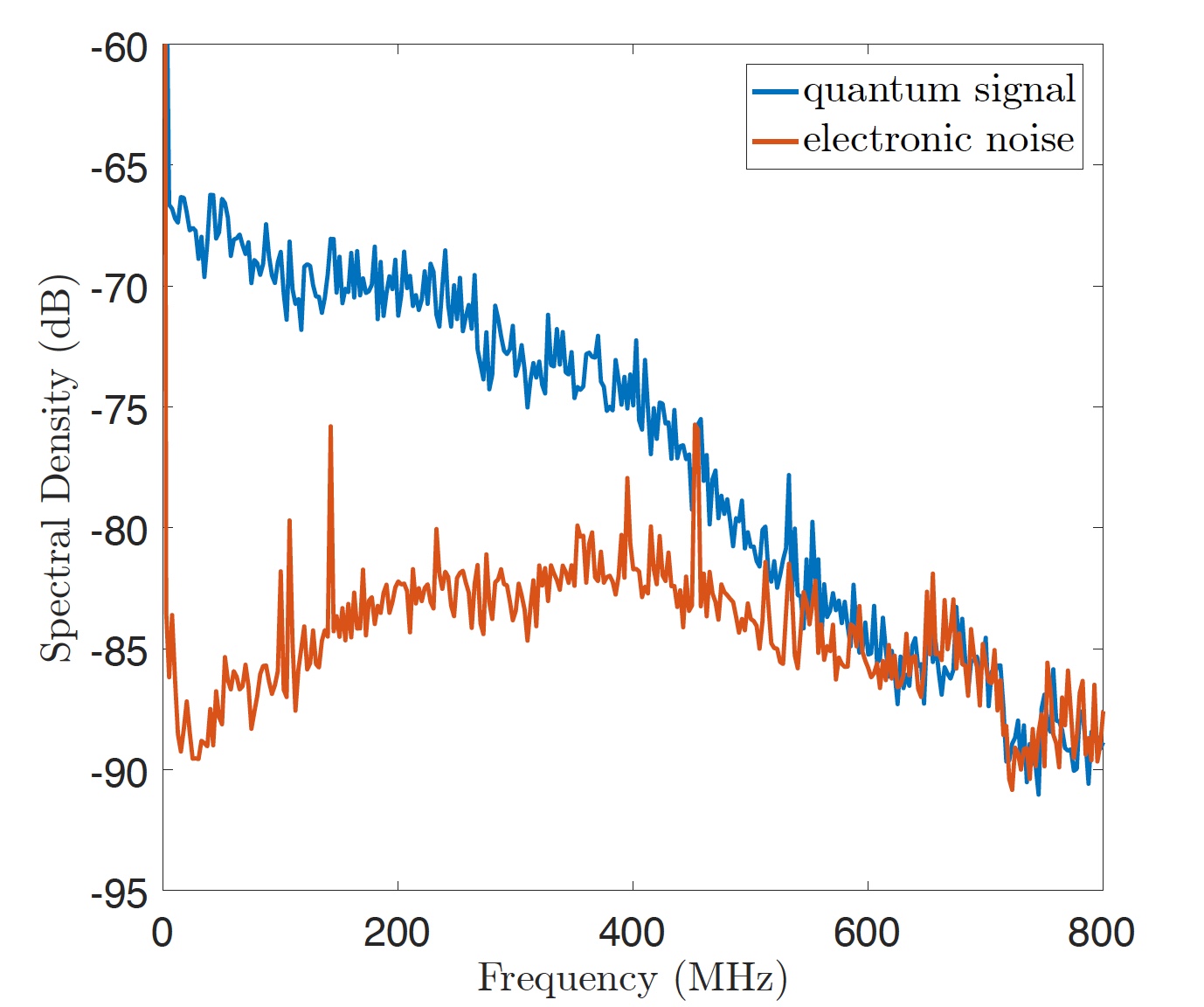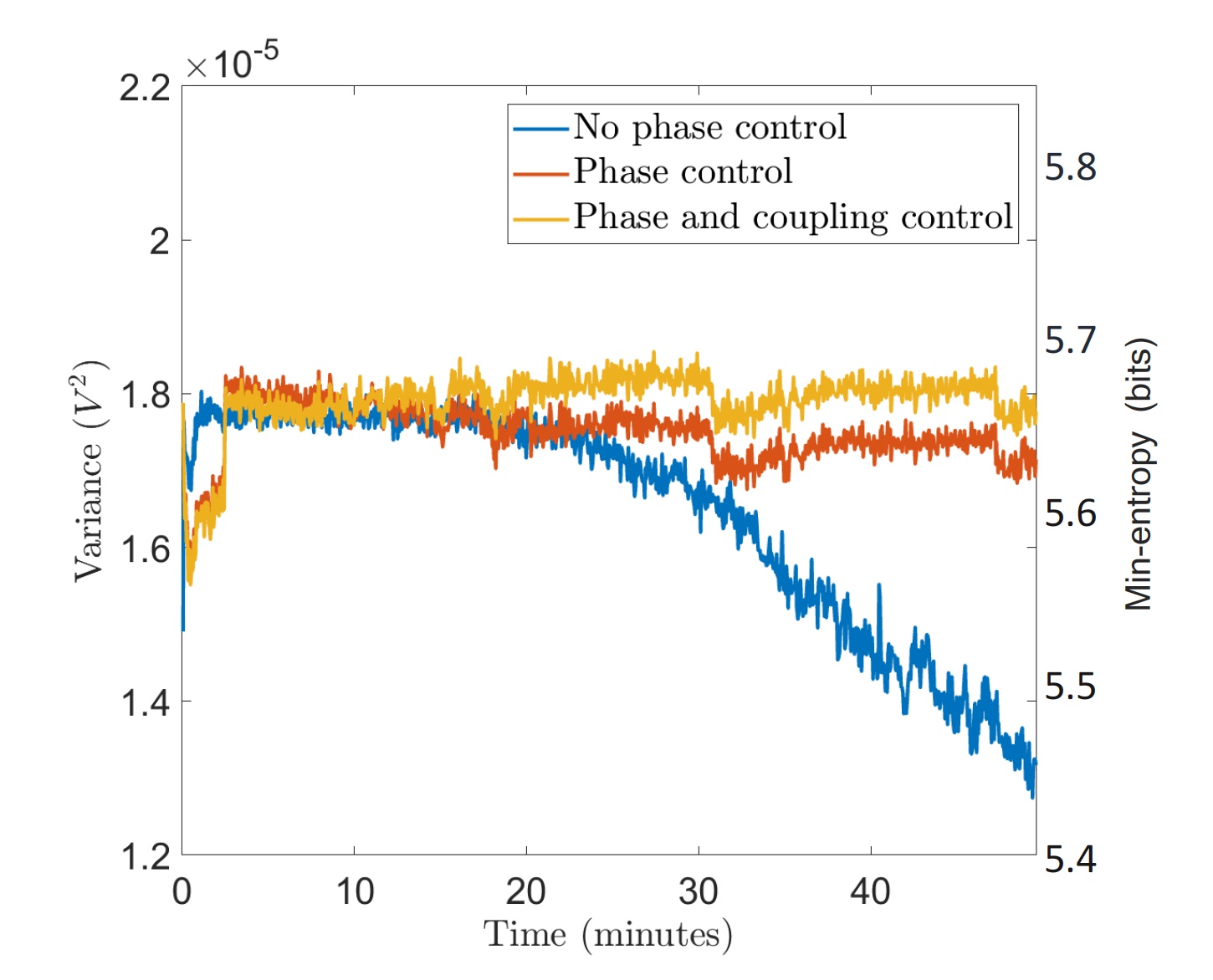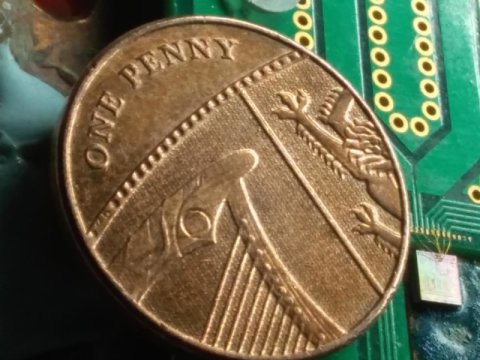Photon random number generator: the most secure encryption?

Information is one of the most valuable resources of our time. Is the information helpful? The question is rhetorical. Of course yes. But getting into the wrong hands can hurt her. That is why they use various methods, techniques and data encryption algorithms. After all, buying something online, you do not want your billing information to hit some rogue. However, not all algorithms are equally good. Data protection and hackers (for simplicity, we will call all data hijackers that way) always work ahead of each other. With the advent of a new encryption method, new methods of circumventing it appear. But what if there is an algorithm that cannot be cracked? This helps quantum random number generators. Researchers from the University of Bristol (UK) have developed a new encryption device - a chip of 1 mm 2that uses photons to generate numbers. Another distinctive feature of the new product is its speed - more than 1 Gbit / s. What difficulties had to be overcome, what advantages did this particular device have in comparison with others, and how protected will our data become with its help? We will look for answers to these and other questions in the report of the researchers. Go.
The principle of operation of the device
The basis of the new device are the principles of silicon photonics, which can be exaggeratedly described as follows: the flow of electrical signals passes through the transmitter, where they are converted into optical signals; then the signals enter the receiver, where it will be converted back into electrical ones.
Schematically, it looks like this:

Using this technology, it became possible to integrate waveguides into silicon, which will send light (optical signal) through the chip, while there will be no light loss along the way. As a consequence, such waveguides can be combined with built-in detectors operating at very high speed to convert the optical signal into information.
If it is impossible to predict or calculate the encryption algorithm, then the information is protected more than reliably. This device exploits the fact that, under certain conditions, the laser will emit photons randomly. The emitted light of any laser is a combination of induced * and spontaneous * radiation.
Induced radiation * - under the influence of an inducing photon, when the system moves from one state to another, a new photon appears. Exaggerated it can be called intentional radiation.
Spontaneous emission * - spontaneous emission of electromagnetic waves by the system, passing them excited to a quiet state.Below is a diagram of the device and its description.

To generate radiation using a diode laser. An insignificant part of the light is directed to a polarization controller, where light is collected in a test waveguide to verify the presence of losses. And the rest of the light is directed to the polarization controller, where it mates in a cascade of Mach-Zehnder interferometers * .
The Mach-Zehnder interferometer * is used to modulate the intensity of light regardless of its polarization.The first and last interferometers play the role of a custom beam splitter. The central transforms phase fluctuations * into intensity fluctuations * .
Phase fluctuation * - type of linear distortion caused by the deviation of the signal from the carrier frequency.
Fluctuation of intensity * - distortion in the power carried by the wave.Further, outside the cascade, there are 2 photodiodes. One of them is used as a “regulator” necessary for calibrating the phase of interferometers. This process is carried out by applying voltage to integrated phase shifters * .
Phaser * - a device in the form of a quadrupole, which provides a constant predetermined phase shift between the alternating voltage at the input and output.The second photodiode is connected to an operational amplifier with side feedback ( OOSTOS ), which transforms the fluctuations of light intensity into oscillations (fluctuations) of voltage. The latter, in turn, are digitized with an oscilloscope to generate random bits.
Speed of operation
In order to establish the optimal sampling rate * of the device, spectral density measurements were carried out * in the presence of an optical signal and in its absence.
Sampling rate * - determination of the number of signals per 1 unit of time when the signal is sampled.
Spectral density * is a characteristic of the emission spectrum, the ratio of the intensity in a narrow frequency interval to the magnitude of the interval itself.

The graph above shows the results of these measurements. Here you can see a very noticeable period of dark noise * up to a speed of about 500 MHz. This is directly related to the specific operational amplifier used in the study and the layout of the electronics.
Dark noise * - statistical changes in the number of electrons thermally generated inside a pixel in a photon-independent manner. Dark noise is the electronic equivalent of photon fractional noise * .
Shot noise * - distortion of voltage and current in the circuit of electrical and electronic devices.To test the operation of the system, the enhancement of the optoacoustic system was set at 5 kΩ, because the operational amplifier of the LT6268-10 model from Linear Technology was used. His work is stable at a rate of 5 kΩ or higher.
Measurements have also shown that photodiodes are more than an order of magnitude faster than an ECST. Therefore, the spectral properties of the analog voltage signal are almost completely determined by the speed of the SSEC.
The graph above also shows some peaks, mainly around 100 MHz, which are environmental noise, which in no way affects the generation of random bits.
Measurements have shown that the potential generation rate is about 2.8 Gbit / s. If you use faster OOSTOS, then this figure can be increased up to 10 Gbit / s.
Job stability
The operation of any system is associated with certain difficulties, and more precisely with factors that may adversely affect its stability. For example, when working with optical fibers, any slight temperature changes can change the length of the fiber, which can disrupt the interference.
The use of integrated photonics provides certain advantages: the potentially small size of the device and its solidity. Compactness allows you to combine all the necessary parts in one small chip. But solidity avoids many types of instability. Such positive properties are especially useful when working with unbalanced interferometers, as is the case with the described chip.

This graph clearly demonstrates the high level of system stability for 1 hour of continuous operation. This result was achieved by simply calibrating the phase of the unbalanced interferometer every 2–3 minutes ( red line in the graph). If calibration is not performed, then the signal ( blue line ) remained stable for several minutes.
The yellow line on the graph is a signal obtained by normalizing the distortion, taking into account changes in the polarization of light outside the working device.
Thus, this device not only shows the excellent results of generating true random numbers, but also a stable operation that is not influenced by both external and internal factors.

The appearance of the chip (to the right of the 1 penny coin, the diameter of which is only 20.3 mm) I
recommend reading the report of the scientists to familiarize themselves with the tests of other characteristics of the device, as well as the methods of their conduct.
Epilogue
Sometimes information is called the most valuable currency in the world. If someone stole a wallet it is annoying, but not fatal (as a rule). The abduction of information can lead to enormous financial losses, and even to human casualties. This can not be allowed, therefore, encryption technology does not stand still and develop, accumulating in itself new discoveries in various fields of science.
But any protection can be circumvented, is not it? Perhaps due to this amazing invention described above, this statement will not be so unambiguous. Combining an incredibly small size, high speed of generation and absolute randomness of the algorithm, the scientists managed to create a device that is really able to protect information from any attempts to illegally take possession of them. As soon as this technology reaches its maximum potential and becomes ubiquitous, we will know in the near future. Only time and testing "in the field" will show whether this miniature chip is as good as its creators say.
Thank you for staying with us. Do you like our articles? Want to see more interesting materials? Support us by placing an order or recommending friends30% discount for users of Habr on a unique analogue of entry-level servers that we invented for you: The whole truth about VPS (KVM) E5-2650 v4 (6 Cores) 10GB DDR4 240GB SSD 1Gbps from $ 20 or how to share the server? (Options are available with RAID1 and RAID10, up to 24 cores and up to 40GB DDR4).
Dell R730xd 2 times cheaper? Only we have 2 x Intel Dodeca-Core Xeon E5-2650v4 128GB DDR4 6x480GB SSD 1Gbps 100 TV from $ 249 in the Netherlands and the USA! Read about How to build an infrastructure building. class c using servers Dell R730xd E5-2650 v4 worth 9000 euros for a penny?
